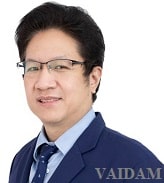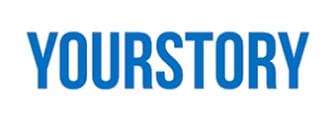Aortic Aneurysm Endograft Repair
This is a minimally invasive procedure that is used to treat aortic aneurysms.
Aneurysm Embolization and Stent Placement
Vascular embolization is a minimally invasive procedure to treat aneurysms at risk for rupture and bleeding.
Open Surgery
In open surgery, a surgeon performs the graft or removes the aneurysm through an incision.
Endovascular Coiling
Microvascular Clipping
It is a type of open brain surgery that treats cerebral aneurysms. The surgeon cuts off the blood supply by placing a metal clip at the aneurysm's base.
The cost of Arterial Aneurysm treatment includes:
The overall cost of the procedure also varies based on the patient's condition and preferences. Some of these factors are:
Listing approximate price of Arterial Aneurysms Treatment and some related procedures. The prices may change depending upon the centers and condition of the patient.
| Treatment name | Cost range |
|---|---|
| Peripheral Angioplasty | USD 5400 to USD 6600 |
| Balloon Angioplasty | USD 4050 to USD 4950 |
The cost of arterial aneurysm surgery tests such as CBC, LFT, KFT, sodium, potassium tests and viral markers test such as HIV, HCV, HBASG test. Diagnostic tests such as cardiac MRI is done which uses magnetic fields and radio waves to create detailed images of the heart and aorta, in some cases abdominal ultrasound is also done. MRI may be used to diagnose an aneurysm and determine its size and location.
The cost of pharmacy, medicines are included in the package but if you get these from outside then you have to pay for it.
Arterial aneurysm takes around 2-4 hours to complete under general anaesthesia. After your arterial aneurysm surgery you will kept under observation in ICU, where you will be carefully monitored before shifting to a normal ward. The complete hospital stay after surgery is of three to ten days after which you can go home.
Popular Cities in Thailand for Arterial Aneurysms Treatment are:
A Cardiac and Vascular Surgeon treats Arterial Aneurysms.
Listing popular specialists:

Consultant, 25 years of experience

Vascular Surgery.

Senior Consultant, 32 years of experience

Vascular Surgery.

Senior Consultant, 20 years of experience

Vascular Surgery.

Senior Consultant, 25 years of experience

Surgical Oncology and Vascular Surgery.

Senior Consultant, 25 years of experience

Trauma Surgery and Vascular Surgery.
Surgical procedures for repairing Arterial Aneurysms have a success rate of more than 95% of patients fully recovering.
Our Services for Arterial Aneurysms Treatment in Thailand
Transparent - Professional - Without Hassles

Betty From Liberia | Received Aneurysm Treatment in India
Arterial aneurysm are caused due to atherosclerosis and high blood pressure. An aneurysm may develop as a result of deep wounds or infections or perhaps one of your artery walls is weak from birth.
About 85% of cerebral aneurysms are found in the anterior circulation, primarily on the circle of Willis.
Over 95% of patients who undergo surgery to treat abdominal aortic aneurysms recover fully, making the operation very successful.
Instead of refined, white carbs like white rice or white bread, choose whole grains and complex carbohydrates like brown rice or whole-grain bread. Avoid or consume in moderation liquids with added sugar, such as soda, fruit juice, and energy drinks.
Implement aneurysm safety measures (immediate and absolute bed rest in a quiet, non-stressful setting; restrict visitors, except for family). Lift the bed's head 15 to 30 degrees, or as instructed.
Atherosclerosis (a blood vessel disease in which fats build up on the interior of artery walls) is a risk factor for high blood pressure, smoking, diabetes, and high cholesterol and can raise the possibility of developing a fusiform aneurysm. Aneurysms don't always burst.
Aneurysms in the brain may run in families. You are more likely to develop a brain aneurysm than the typical 3 percent if brain aneurysms run in your family. The number of afflicted relatives and their degree of closeness to you determine your risk.
Although an aneurysm can develop in any blood channel, they are more frequently found in arteries than veins. Aneurysms take several years to develop, even if people with aneurysms are born with a weakening in one or more locations of the arteries in the brain.
Aortic aneurysm surgery takes 2 to 4 hours to complete under general anaesthesia.
Aortic aneurysm surgery is being done by a cardiologist.
The two primary surgical techniques for treating an aneurysm are open surgery and endovascular treatment. In an open procedure, a big incision is made in your chest or belly. The injured section of the aorta is subsequently replaced by a graft by the surgeon. Compared to traditional surgery, endovascular repair requires a significantly smaller incision.
. The typical hospital stay is of 11 days (interquartile range 9-14 days).
Some precautions you have to take after arterial aneurysm surgery are:
The median time of survival was 18 (from 1 to 90). At median intervals of 18 (range 1-38) months, 20% (or 35% of patients) had rupture. For AAAs between 5.0 and 5.9 cm and 6 cm or larger, the probability of rupture within three years was 28 (95% confidence range 12-49%) percent and 41 (24-59) percent, respectively.
Keeping a healthy weight is important; even shedding a few pounds can have a significant impact on your blood pressure and general health. Regular exercise helps reduce blood pressure by keeping your heart and blood vessels healthy. Being active and exercising consistently are both beneficial.
A burst aneurysm's primary symptom is an abrupt, intense headache. This headache is sometimes referred to as the "worst headache" ever. Common symptoms of a burst aneurysm include nausea and vomiting in addition to a strong headache.
Aneurysms that are greater than 7 milliliters in diameter, situated in the posterior or anterior arteries, and have a "daughter sac" are at the highest risk of rupturing. These "daughter aneurysms" are complicated in design and have an extra dome-shaped protrusion.






NABH Certified Healthcare Discovery Platform
Vaidam is NABH certified healthcare discovery platform that will connect you to top-notch medical experts, hospitals, wellness options, and trusted travel partners to help identify and make the right healthcare choices.

Researched & Personalized Treatment Plan - Under One Roof
You can search for the best hospitals, read about them, view photographs of the facilities at the hospitals and the places at which the hospitals are located, and check the cost of treatment.

Quality Treatment Within Your Budget
As soon as you post an enquiry, the patient relation team will collect details from you, share them with the doctors and hospitals on Vaidam's panel, and get a personalized treatment plan. We research to get quality treatment within your budget.

Treatment to Travel
Vaidam concierge assists patients, to get medical Visa, the best airline fares and arrangements for your stay. Our concierge also helps you with daily travel, language, and food concerns. Vaidam does everything to be your perfect host. All of Vaidam’s services are free of cost to patients.

International Reach
Vaidam Health has network in 15+ countries, which includes India, Turkey, UAE, Germany, South Korea, Thailand, Malaysia, Spain.
Note: Vaidam Health does not provide medical advice, diagnosis or treatment. The services and information offered on www.vaidam.com are intended solely for informational purposes and cannot replace the professional consultation or treatment by a physician. Vaidam Health discourages copying, cloning of its webpages and its content and it will follow the legal procedures to protect its intellectual property